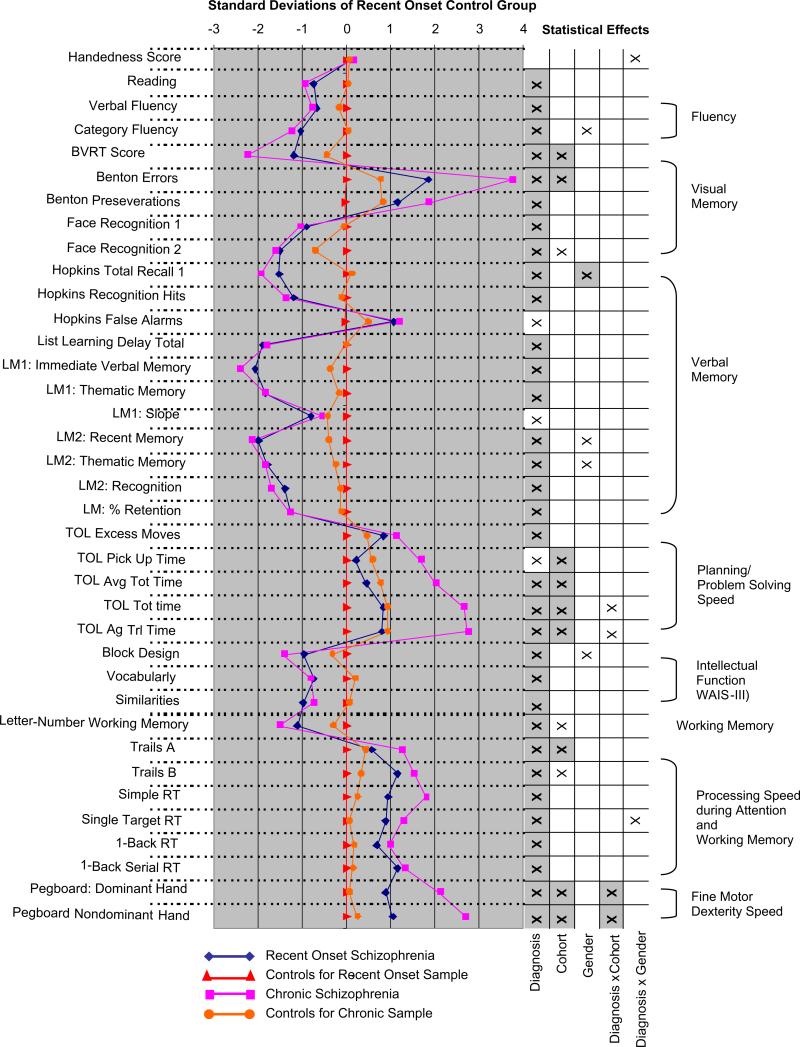Fig. 1.
Means for recent-onset and chronic schizophrenia patients and their respective control groups for cognitive indices as z-scores derived using the recent-onset control means and standard deviations. Significant statistical effects (p < .05) identified through ANOVA's are indicated by an ‘x’ in the right-hand columns (effects that survived Bonferroni correction for multiple comparisons are indicated by grayed squares). Positive z-scores for time-based (TOL time indices, Trails A, Trails B, RT's, and Pegboard) and error-based (Benton Errors, Benton Preseverations, Hopkins False Alarms, TOL Excess Moves) indices indicate worse performance. Indices in the graph were derived from the Annett Scale of Hand Preference (Handedness), the WRAT-3 (Reading), the Delis–Kaplan Executive Function System (Verbal and Category Fluency), the Benton Visual Retention Test (Benton Visual Memory, Errors, and Preseverations), WMS-III (Face Recognition 1, Face Recognition 2 [delay], Logical Memory [LM]1: Immediate Verbal memory, LM1: Thematic Memory, LM1: Slope, LM2: Recent Memory [delayed], LM2 Thematic Memory [delayed], LM2: Thematic Memory [delayed], LM2: Recognition [delayed], LM: % Retention), Hopkins Verbal Learning Test-Revised (Hopkins Total Recall 1, Hopkins Recognition Hits, Hopkins False Alarms, List Learning Delay Total), Tower of London (TOL) Test, the WAIS-III (Block Design, Vocabulary, Similarities, Letter-Number Sequencing), the Tail Making Test (Trails A and B), the California Computerized Assessment Package (CalCap) (Simple Reaction Time [RT], Single Target RT, 1-Back RT, 1-Back Serial RT), and the Grooved Pegboard Test (Pegboard: Dominant Hand; Pegboard Nondominant Hand).

